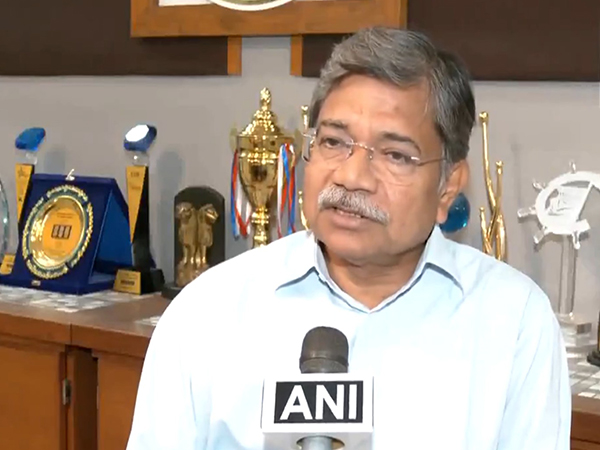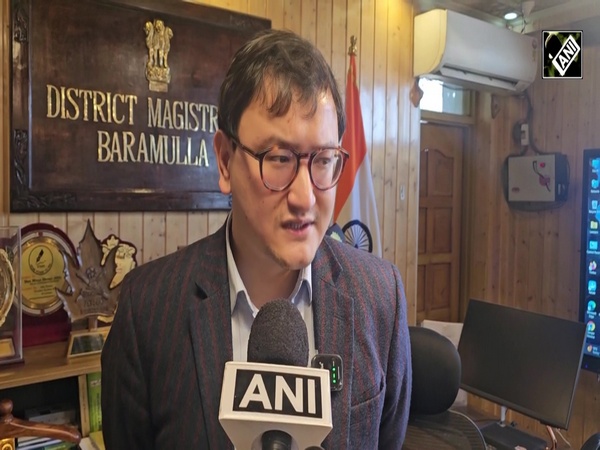Government to use about 99 pc of borrowed resources to finance effective capital expenditure: Sitharaman in Lok Sabha
Feb 11, 2025

New Delhi [India], February 11 : Noting that capital budget outlays have not come down, Finance Minister Nirmala Sitharaman on Tuesday said that the government is using almost the entire borrowed resources for financing effective capital expenditure.
The minister, who was replying to a marathon debate in Lok Sabha on 2025-26 budget, said that effective capital expenditure is projected at 15.48 lakh crore as against 13.18 lakh crore in the revised esitmates of 2024-25.
She said the effective capital expenditure for 2025-26 is 4.3 per cent of GDP as compared to the fiscal deficit target of 4.4 per cent.
Capital expenditure, or capex, is used to set up long-term physical or fixed assets.
Effective capital expenditure includes core capital outlays and the grants in aid to states for creation of capital assets. Though the grants in aid for creation of capital assets is accounted in Budget as revenue expenditure, they go for creating capital assets in the states, she said.
The difference between the two is minimal, she said explaining that it indicates that government is using almost the entire borrowed resources for financing effective capital expenditure.
"The borrowings are not going for revenue expenditure or committed expenditure or any of those kinds. It's going only for creating capital assets. So in effect, the government intends to use about 99 per cent of borrowed resources to finance effective capital expenditure in the upcoming 2025-26 financial year," she said.
The difference between total revenue and total expenditure of the government is termed as the fiscal deficit. It is an indication of the total borrowings that may be needed by the government.
The capital expenditure outlay of Rs 15.48 lakh crore for fiscal year 2025-26 includes Rs 11.21 lakh crore in direct central government spending and Rs 4.27 lakh crore in grants to states for capital projects.
Answering queries on rupee depreciation, she said the depreciation is less compared to some other currencies.
She noted various domestic and global factors influence the exchange rate of Indian rupee. The factors include movement of dollar index, trend in capital flows, level of interest rates, movement in crude prices and current account deficit.
"So the currency volatility across major countries is really extensive," she said.
The US Dollar Index rose 6.5 per cent from late October to late January, she apprised the House. Major Asian currencies such as South Korean won, Indonesian Rupiah, Malaysian ringgit, depreciated by 8.1 per cent, 6.4 per cent and 5.9 per cent, respectively, in this period.
Even G10 currencies also depreciated during this period by more than 5.5 per cent. For instance, Japanese yen depreciated by 7 per cent, British pound 6.6 per cent, and Euro by 5.8 per cent.
In the same period, India's rupee depreciated around 3.1 per cent, publicly available data showed.
Replying to opposition allegations concerning unemployment and low household savings, she said labour force participation rate has increased from 49.8 per cent in 2017-18 to 60 per cent in 2023-24. On inflation front, she said it is within the 2-6 per cent band and the food inflation concerns have been attended to.
She listed Centre's funding and initiatives concerning West Bengal and attacked the Trinamool Congress over allegations of its MPs.
"It is ironical that Trinamool Congress, a party which prides itself on being rooted in the grassroots (Trinamool), now symbolises harassment and denial of rights to the people living at the grassroots, i.e 'Trinamool' . Trinamool Congress has institutionalised corruption, gutted institutions and Trinamool has become a by-word for exploitation. Has TMC now become Trinamool - which means grassroots - Virodhi?" she asked.
"Like every other State, PMAY-G is being implemented in West Bengal since 2016-17. The Government has released Rs 25,798 crore as Central share to the State since 2016-17. However, complaints of irregularities in the implementation of PMAY-G, including a selection of ineligible households. - 25 lakh fake job cards in MNREGA, funds meant for people at the grassroots have been looted by TMC Cadres. - Rs 100 crore Mid-Day Meal fraud, ration mafia thriving denying people on grassroot their benefits. - Ayushman Bharat was blocked and denied healthcare to the poor people living at the grassroots level. - Only 43% tap water coverage vs 74% national average," she said.
Sharpening the attack on the UPA government, she said her government had the onerous burden of repayment of oil, fertilizer and FCI bonds raised during the UPA era.
In 2024-25: Rs 50,647 crore has been paid which includes principal amount of Rs 44,701 crore and interest amount of Rs 5,946 crore. In 2025-26: Rs 43,988 crore has been budgeted for the repayment of the same, including principal amount of Rs 40,464 crore and interest amount of Rs 3524 crore.
She also gave an update about the unspent money with the states. More than Rs 1 lakh crore is remaining as unspent balance with the State Governments as of December 2024, she apprised the House.
As per the Expenditure Profile statement, which is presented along with the Budget, Rs 1,395.45 crore is lying with the States under Rashtriya Krishi Vikas Yojana; Rs 4,636.55 crore is lying with the States under Assistance To State Agencies for Intra-State Movement of Food grains and FPS Dealers Margin Under NFSA; Rs 11,516.03 crore is lying under Samagra Shiksha; Rs 5,205.20 crore is lying in the States under Pradhan Mantri Poshan Shakti Nirman (Erstwhile National Programme of Mid-Day Meal in Schools); Rs 2,988.03 crore is lying in the States under Flexible Pool for RCH and Health System Strengthening, National Health Programme and National Urban Health Mission; Rs 7,059.12 crore is lying in the States under Human Resources for Health and Medical Education; Rs 12,319.17 crore is lying in the States under Swachh Bharat Mission (SBM) (Urban); Rs 12,377.82 crore is lying in the States under AMRUT (Urban Rejuvenation Mission-500 Cities); Rs 13,782.82 crore is lying in the States under Jal Jeevan Mission; Rs 14,715.47 crore is lying in the States under Pradhan Mantri Awas Yojana (PMAY)- Gramin; Rs 4,351.55 crore under Mahatma Gandhi National Rural Guarantee Program.
Sitharaman said the Union Budget for 2025-26 rolls out a futuristic path for transforming India into #ViksitBharat by 2047.
"Our main goals in this budget are: a) To accelerate growth b) Secure inclusive development c) Invigorate private sector investments d) Uplift household sentiments; and e) Enhance the spending power of India's rising middle class with focus on Garib, Youth, Annadata and Nari",
"It unveils new schemes and reforms in the following broad sectors: a) Promotion of Agriculture, MSMEs. Investments, and exports as growth engines and building Rural Prosperity and Resilience b) Enabling employment-led development, spurring domestic consumption, and boosting manufacturing in India including export promotion c) Continuing public capital expenditure and rekindling the animal spirits in the private sector to step up investments, d) Investing in the people, economy and for innovation. The Union Budget seeks to astutely balance the nation's development priorities and fiscal imperatives," she added.
The minister said that during the budget making process, our government's philosophy has remained to prioritise fiscal management.
"It is in line with India's response to the once-in-a-century COVID-19 pandemic as India continues to remain the fastest-growing economy. It's starkly opposite to India's handling of the 2008 Global Financial Crisis, that led us to become part of the 'Fragile Five'. Under this Government, India transitioned from the 'League of Fragile-5' to become one amongst the top five economies in the world. Since 2020-21, when the devastating pandemic hit, the Union Budget had recurrent themes like transparency and credibility of budget making, reforms to catalyse growth, targeted social security and use of technology for obtaining value for public money," she said.
Sitharaman said increasing the limit of Kisan Credit Card (KCC) from Rs 3 lakh to Rs 5 lakh is being done so that farmers don't fall prey to the middlemen who charge huge amounts.
"This amount through KCC is guaranteed by the government, they don't need to give any collateral and also for timely servicing, they get interest subvention. Nearly 8 crore farmers will benefit from short-term lending which will begin from April 1, 2025-26," she said.



















